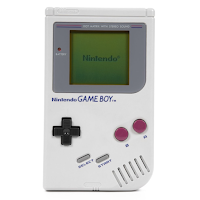Thanks to new research from Ebuyer, we were recently treated to how much six classic gadgets would cost in today's dollars and how much some of them are going for in mint condition today. Here's a summary of the six picks they covered, and we'll share their price tags at the end of the article.
Nokia 3310. This was a piece of tech that reimagined the way people thought about mobile phones and is one of the most iconic gadgets ever created. Praised for its great durability and long-lasting battery life, it became a bestseller for Nokia, selling over 126 million units1, and who can forget playing the game Snake on one of these bad boys when it was released in 1999.*
Sony PlayStation. The original PlayStation was released by Sony as a "console for adults" to rival Nintendo's gaming consoles during the 1990s. From there, they released four iterations of the console, with the PlayStation 2 holding the record for best-selling gaming console of all time. Classic games released in the UK with the console in 1995 included: Crash Bandicoot and Spyro.
Sony Walkman. This gadget easily earns the "godfather of portable music player" moniker. It was the first of its kind in terms of simplicity and affordability. It welcomed the common use of headphones in public spaces, and it ran on AA that allowed it to travel fair distances between power sources. The success of the Sony Walkman in 1979 and beyond, selling over 400 million units, led to the creation of other iconic portable music players like portable CD players and even the iPod.
Polaroid Camera. Possibly the most iconic camera of all time, Polaroid allowed people to take instant snapshots of their lives in an easy-to-use, affordable way. This gadget is so iconic that there are modern-day imitations (almost 40 years after the first release!) and apps on smartphones that attempt to replicate the off-color effect of the Polaroid in 1977. It's still cool.
Nintendo Game Boy. No other gadget revolutionized the way the gaming industry would move forward, freeing players from having to play games at home. With its own power source, the 1989 release of the Game Boy led to a massive shift in gaming that inspired the Sony PSP and even Apple's iPhone. Including the updated model, the Game Boy Advance, Nintendo sold over 200m of these chunky handheld devices, and it was an absolute bestseller throughout the 90s.
IBM Model 5150. Sure, there were personal computers before its release, but the 515 was a home computing pioneer. This piece of historic tech was the starting place for all modern home computers, apart from Apple computers which have all been developed from the original Macintosh. Can you imagine? Its release wasn't even that long ago — 1981.
So how much did they sell for then? How much would that be today? And what's the value if you kept it?
Pretty cook. Special thanks to Ebuyer for reaching out with this classic gadget lineup. To find out more about Ebuyer or check out the modern-day versions of these classic gadgets, visit them here.
![Liquid [Hip]](https://blogger.googleusercontent.com/img/b/R29vZ2xl/AVvXsEjAFBQPqS7J0-rrttNoRYSsuwIePPZf4Nq6sqDioK1zzVQXJIQXKzq_NVNI4n6h3inuRQFBKOcJeZeSufkdHHIOxbSWyBjTjTxgKEQGyPzdwvkEEeECh4bI5YEGk4RWGUINSd7vulPQsCA/s1600-r/liquidhip.jpg)










